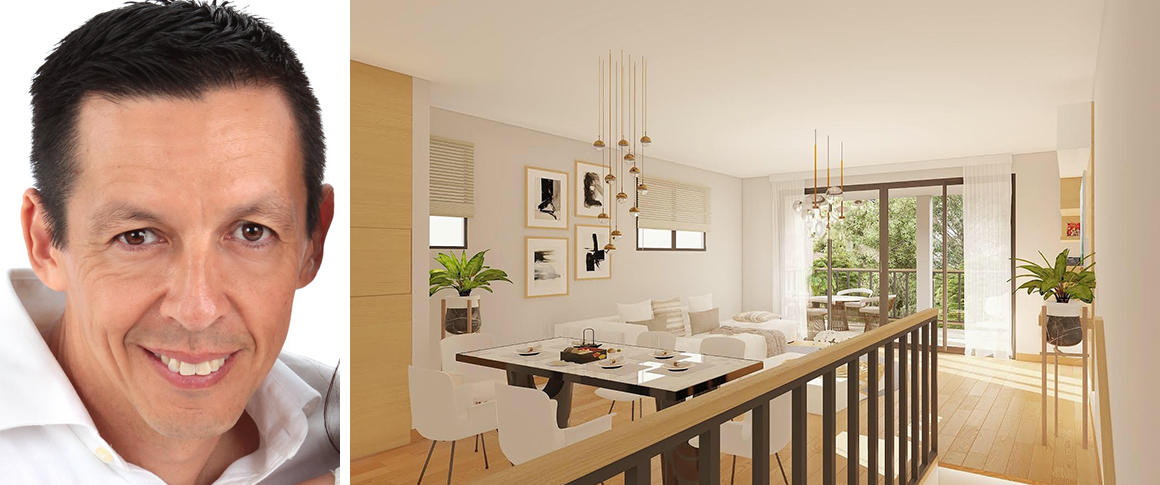We recently sat down with international architect Octavio Viramontes, architect and project manager at Adelantus Inc., a consulting firm based in San Antonio, Texas. From navigating the Tri-National Mutual Recognition Agreement (MRA) with Mexico and Canada to navigating the nuances of practicing in different climates, Octavio shared his insights and advice for other architects interested in practicing across borders.
What inspired you to become an architect?
I can’t say that there was a single factor. From an early age, I was fascinated by architecture—experiencing spaces, drawing building, assembling models, etc. Watching people interact in buildings always attracted my attention, from small to public spaces.
Family was also a big factor. Despite the fact that their business was not architecture or construction, my family would invest in real estate and developed or transformed properties. I always found the process and the end products fascinating. Working with people and creating spaces for them to live has always been my passion.
You originally earned your license/registration in Mexico, and recently earned a license in both Canada and the U.S. through the Tri-National MRA—what prompted you to want to become licensed in three countries?
In 2013, I was invited to work as a project manager for Adelantus Inc., an American company in Texas. Being able to continue designing and creating spaces motivated me to seek a U.S. license. The MRA offered a great alternative to the typical U.S. licensure process, allowing me to keep practicing the profession I love.
What was the process of going through the MRA like for you?
I was one of the first architects to go through the process, so there was a bit of a learning curve in navigating all the parts. For this reason, the initial stage took longer than what it now takes. I really have to thank Maribel Fisher, the Mexican Federation coordinator at the time, for all her valuable efforts to make this a reality.
Once all the Mexican documentation was done and the process reached NCARB, everything went very smooth and fast, the date for the interview came right away. In no time, I received my NCARB Certificate and was able to apply for a license in Texas.
Do you have any advice for other architects interested in pursuing the MRA?
Keeping good records of your work is essential to the process. Gathering all the documentation is what becomes the most time consuming. Everything flows very well if you have the documentation to prove your years of practice, academics, continuous education, symposiums, and involvement in the field. Having a clean record with strong ethical practice is also essential.
It is very important to be consistent once you start the process and be determined to take it all the way to the end.
Do you have plans to become licensed/registered anywhere else?
I don’t have any current plans; Texas has kept me quite busy for now.
Have you spotted any key differences in project approach or style between the work you do in Mexico compared to the work you’ve done in other countries?
U.S. climate has been one of the most notorious differences. Extreme weather in the U.S. requires different measures and material solutions, while Mexico has very mild weather and traditional building assemblies.
Land size is another advantage. Texas offers vast areas of land for development in contrast with the limited territory available in most Mexican cities.
Among the residential projects, some differences can be found due to the diverse lifestyle and the traditional language of many U.S. neighborhoods. Nevertheless, from my point of view, practice is very similar in both countries—and now even the language and styles have become common in many aspects.

Can you tell us about one or two of your favorite projects, and why they’re special?
It is hard to point out a favorite project. All projects are like family to me, and I have a special attachment to each of them. However, multifamily housing has always been one of my favorite areas because it deals with the users’ most intimate spaces to live. From single family to multifamily, providing dwelling places that allow personal growth and a pleasant life is fascinating.
Challenging projects with many restrictions is another line of passion for me. Pipestone Assisted Living is a project that a client originally brought for a few changes since the original architect had retired from practicing. With time, we were commissioned to design a brand-new approach, and I was very pleased with the solution that went above and beyond all objectives. Achieving the ideal project for a client who was willing to compromise important aspects due to several challenges was a big satisfaction. Without a doubt, my background in challenging projects allowed us to think outside of the box and solve all requirements.
Interested in pursuing international licensure? Learn more about the opportunities available at www.ncarb.org/international.
